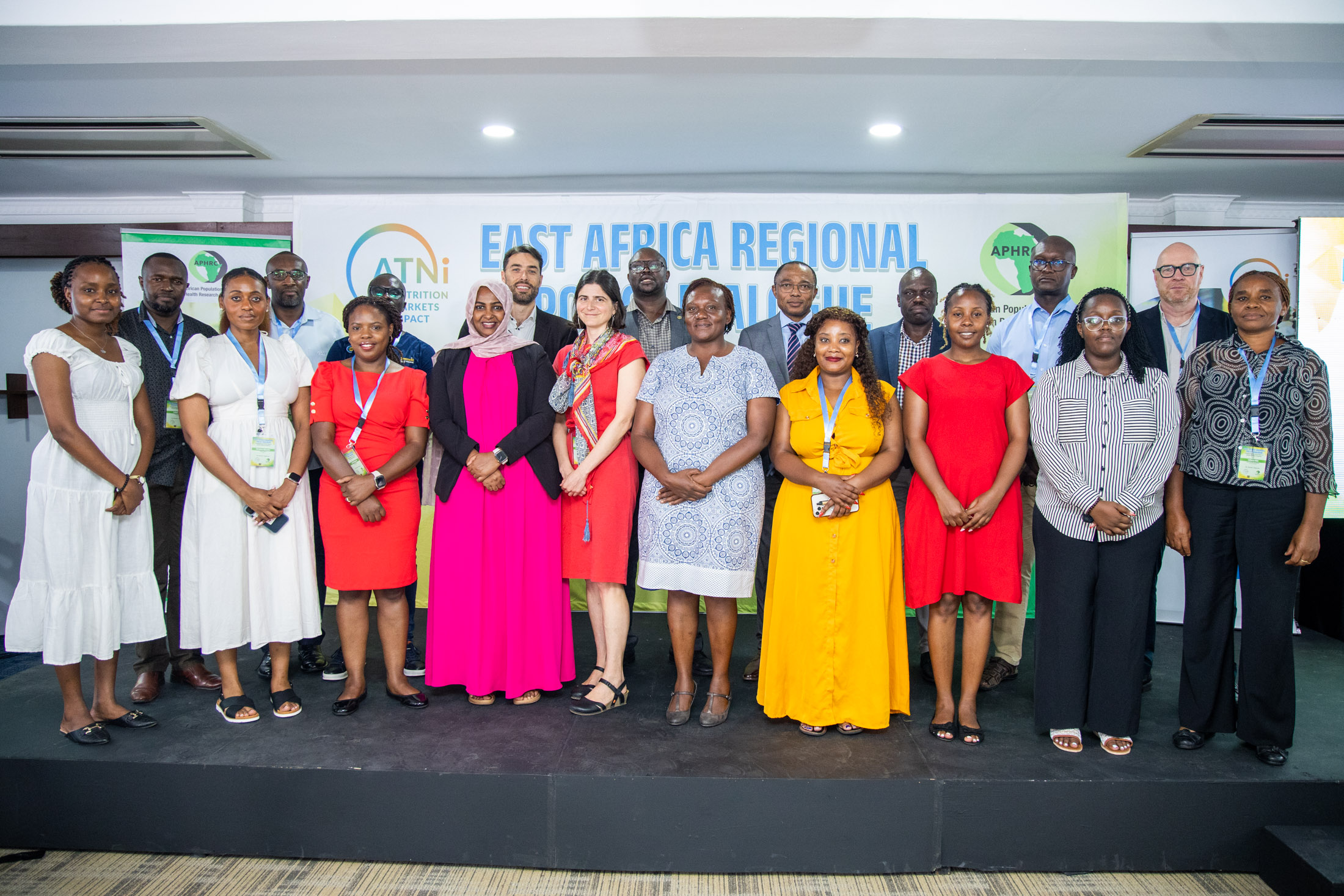From June 16 to 20, APHRC’s Countdown to 2030 initiative convened over 270 researchers, analysts, and policy experts from 34 African countries for the 2025 Country Annual Meeting to assess progress on women’s and children’s health.
Speaking during the week-long meeting closing ceremony, APHRC Executive Director and Countdown to 2030 for Women’s Children’s and Adolescents’ Health steering committee co-chair, Dr. Catherine Kyobutungi, reflected on the Country’s annual meeting as a testament to the continuous hard work of various teams and noted the initiative’s remarkable growth—from 9 to 34 participating countries in about a decade.
She highlighted the broadening of the initiative’s focus areas and the introduction of innovations, such as the fellowship program and the Shiny app for data processing. She emphasized the Countdown community’s commitment to impact, innovation, and progress beyond the initial status quo.
In his keynote address, Dr. Bashir Issak, Head of the Department of Family Health, Ministry of Health, Kenya, shared that this year’s 2025 Country Annual Meeting theme, “Producing reliable national and subnational health statistics with a focus on maternal, newborn, child and adolescent health and nutrition,” speaks directly to Kenya’s shared commitment to improving health outcomes through better data.
He noted that reliable data is not just a technical necessity; it is the foundation for innovative, equitable, and impactful health policies.
He reaffirmed Kenya’s commitment to data-driven decision-making in reproductive, maternal, newborn, child, and adolescent health and nutrition (RMNCAHN), adding that the Country was working to strengthen the integration of DHIS2 data, routine service statistics, and survey findings to drive equitable service delivery.
Dr. Bashir urged the meeting participants not only to analyze data but also to act on it, ensuring that the insights generated translate into stronger health systems, better programs, and improved outcomes for women, children, and adolescents across Africa.
Pamela Rao of the Gates Foundation, Countdown’s primary donor, said that Countdown presents a unique space in the global health architecture. “You can have the data, but if you’re not able to get it in the right format to the decision makers at the right time, it’s of limited use,” Ms Rao said. “Data use is about moving the needle to make sure that the health indicators and the well-being of women, children, and adolescents are improving.”
The Countdown partnership is unique in that it puts country needs at the center and emphasizes making use of all available data sources through a country-led process, noted Peter Hansen from the Global Financing Facility, which partners with Countdown to host the annual meeting. Through this process, Countdown partnerships have built a thriving community, Dr. Hansen added.
“Across many low- and middle-income countries, access to timely and high-quality population-level survey data is becoming increasingly constrained,” said Cheikh Faye, Director of Countdown to 2030 and the African Population and Health Center’s West African office. “At the same time, funding for global health and routine monitoring has plateaued – or in some cases declined – raising the stakes for how we use existing data sources. This is precisely why the Countdown approach remains both timely and vital: by focusing on the use of health management information system (HMIS) and routine facility data, we are equipping countries to take full advantage of data they already produce – month after month, district by district … This is about building sustainable systems of evidence – not just for external reporting but for internal action.”
Other speakers at the opening session included Hillary Kipruto from the World Health Organization and Me Ely Noël Diallo from the West African Health Organization, who expressed concern that many African countries are unlikely to meet Sustainable Development Goal targets and the future of the Demographic Health Surveys and similar population-level surveys is uncertain due to funding cuts from the United States government.
Apart from being the largest meeting to date with the inclusion of 8 new countries to the Countdown initiative and 26 countries that have participated in previous annual meetings, there was also the use of an innovative analytical tool. The cd2030 application is an R-based software package designed to streamline data extraction, analysis, and visualization. It is encapsulated within an intuitive, user-friendly Shiny App interface.
The week-long rigorous exercise led to Updated estimates for Reproductive, Maternal, Newborn, Child, and Adolescent Health and Nutrition and Nutrition indicators (up to the end of 2024); strengthened analytical skills, including disruption analyses and communication capacities for health data utilization; enhanced understanding of data quality, system performance, and institutional mortality assessment to inform health strategies, and; improved data presentation techniques to support decision-making and advocacy.
Part of the exercise involved preparing country-specific synthesis reports. The participants also prepared posters, with Zambia, Senegal, and Chad winning the best poster award under the old countries category and Togo, Namibia, and Benin leading the new countries category.


























